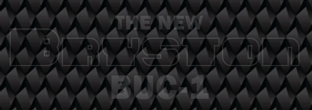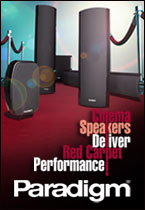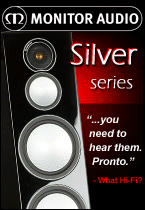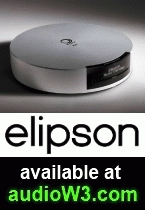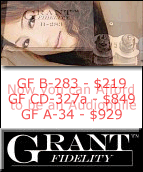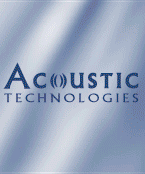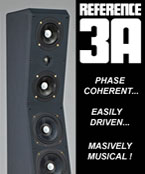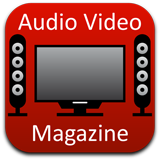England’s Chord Electronics is one of those few firms that travels its own path, completely ignoring conventional wisdom. Among its many innovations are high frequency switching power supplies, MOSFET transistors made exclusively for Chord Electronics by a UK semiconductor manufacturer, staggeringly original casework which includes glass portholes to view the exquisite circuit layout and unique digital filtering and digital to analog conversion technology. You won’t find this company buying in the latest commercial DAC chipsets like most of its competitors. You might think all this would come at a price, and you’d be right. In 2009 I had the gorgeous Chord QBD76 DAC in for an extended audition and found it to be an extraordinary piece of work. It listed for $6,495 US and I felt it offered strong value for money at that price. Today the latest version of that unit, the QB76 HDSD has traded in the Bluetooth option in favour of DSD and other hi-res streaming through its USB port, making it even more desirable albeit at a significantly increased price.
Wouldn’t it be nice if someone could bring us something that sounds exactly the same but costs a small fraction of the price, say $1,795. Ideally it would retain the stunning looks and that signature porthole. Is it possible? Probably not, but I’m here to tell you, you’ll need to work extremely hard to tell the new QuteHD DAC from its big brother sonically. There are differences, but so slight they are almost immaterial. And the looks are still impressive, if not quite the same high zoot level. How has Chord done this?
The QuteHD is based on the same architecture as the QBD76 HDSD. At the core is a Xilinx Field Programmable Gate Array (FPGA) chip that allows Chord to configure the hardware architecture within the chip, making updates and design changes easy. This chip handles the digital receivers for each input, input switching, clocking, Isochronous USB timing and digital Phase Lock Looping (PLL), WTA interpolation filtering (a Chord exclusive), DSD over USB support and the proprietary Pulse Array DAC. A separate FPGA chip handles asynchronous USB communication and isolates the DAC clocks from the computer. Each sample rate clock is generated discretely using highly accurate crystal oscillators for optimum performance and ultra-low jitter performance. As the signal frequency changes, different coloured LEDs light up the interior, visible through the porthole.
The two models differ in the number of inputs (down from 7 to 3), and the QuteHD lacks balanced analog outputs and provision for user selectable RAM buffering or phase selection. Some items are simplified, such as the use of a single outboard power supply instead of separate power supply stages for each section of the unit. The QBD76 HDSD has its output constructed from 32 stages compared to just 8 in the QuteHD and big brother’s conversion stage implements a far more complex algorithm with a longer tap length. The new chassis is also smaller and less rigid, while all controls have been replaced by automatic selection algorithms.
Like all the products in the Chordette line and unlike almost every other DAC out there, the QuteHD can be partnered by a matching rack or carry case, along with a range of similarly packaged components.
The serious reviewer accumulates some tricks of the trade to enable him to differentiate between closely matched components. He will have multiple sets of matched power cords, interconnects and speaker cables for example, and multiple copies of the same excellent recordings, often repeated again in multiple formats. An amplifier with a digitally calibrated volume control (in dB) and holding separate settings for each input is a huge advantage. Multiple unbalanced inputs are often available, but how many listeners have access to more than one set of balanced inputs on our amplifiers? You also need an accurate sound pressure meter such as the excellent ATI SLM-100 and a test disc such as the Nordost System Setup and Tuning Disc. You also need extremely well-resolving, wide-bandwidth components across the board and a vast repertoire of music from small scale to full orchestra, and from Bert Jansch to Led Zeppelin.
For this particular review I needed my whole bag of tricks to assess the new Chord because its performance was off the scale and dramatically close to the reference quality EMM Labs DAC2X ($15,500) that’s been through my hands recently.
The first and simplest test is a comparison of SACD playback from the EMM Labs XDS1 against this little DAC. Wait a minute – surely this DAC cannot take input from an SACD player? You’d be right of course. The XDS1 can output a DSD stream over EMM OptiLink optical connections but the Chord has no such input. But the Chord is one of the first of a new breed of DACs that can stream DSD over USB from a computer using the new DoP 1.0 protocol, just like the revised Chord QB76 HDSD and the EMM Labs DAC2X. I could compare downloaded DSD format music directly to the matching SACD disc playing in synchronized time on the SACD player through its balanced outputs. I used JRiver Media Centre 17 on a Windows 7 laptop for this purpose. Chord provides detailed setup instructions. A set of the Beethoven Symphonies and Kind of Blue from Miles Davis provided the source material for this test and the results were amazingly close. There was very little difference in terms of tonality or definition or even frequency response between the two carefully matched sources. Where the XDS1 did come out ahead was in how it floated a larger, more relaxed image into the room, more three dimensional and natural. I must emphasize that these differences were hard to detect by simple A/B switching. I had to listen to entire tracks and immerse myself deeply into the music for the benefits of the more expensive gear to become apparent.
Other high resolution material, mostly 96/24 computer files but also some 192/24 material showed the superb abilities of the little Chord and revealed all the expected benefits of the high bit density over normal Redbook CD (44.1/16).
Any high-end DAC should do well under these circumstances. Most will not be able to accept the DSD material and some that do will convert it the PCM before converting digital to analog, which is likely to impair performance. The Chord and the DAC2X both perform conversion of DSD to analog directly.
Now for the acid test. How does the Chord cope with the lower resolution signal from a standard CD? CD really separates the winners from the rest of the pack among DACs. All sorts of tricks are used to cope with the inadequate bit-depth of the Redbook standard, chosen as it was to allow Beethoven’s 9th Symphony to fit onto a single silver disc at its then current capacity limit. All sorts of choices are involved in the methods of digital filtering, upsampling and oversampling techniques, digital clocking, jitter reduction, multi-bit, sigma-delta or 1-bit conversion and noise shaping, but the details while interesting are far less important than how well it all works in practice.
I setup the EMM Labs XDS1 disc player to feed a balanced analog signal to the preamp. Sadly it offers no digital output that the Chord can accept. Big brother QB76 has AES/EBU DIN digital inputs but that’s been sacrificed on the QuteHD. So I pressed the excellent Meridian G08 CD Player into service using a second copy of the same material. I sent its balanced analog output into the same preamp for comparison purposes, and directed its optical digital output to the Chord, which fed the preamp over its analog output (unbalanced).
This is where I almost fell off my chair. While the EMM Labs held a clear lead over the G08 through their respective analog balanced outputs, the Meridian’s digital output passed through the Chord DAC closed almost all the gaps between them. This shows the Chord DAC using unbalanced interconnects outperforming the already excellent Meridian’s built in DAC section with benefit of a balanced connection. Only very close listening could declare a winner between the Chord and the EMM Labs. As before it’s the holographic imaging of the EMM Labs that gives it the title. Dynamics were equally superb both ways, tonal colour matched closely, resolution was indistinguishable.
I’ve gone into a lot of technical detail here because I need it to back up my conclusion. The Chord QuteHD performs at an astonishing level, challenging the very best digital converters available at any price and running rings around most competitors. It will do a superb job with computer audio no matter what the format and will be a great upgrade for the DAC section of almost all CD players on the market. It’s ready for even higher resolution digital formats up to 384kHz/32 bit. And the Qute is cute.
No reservations from me - it’s sensational.
Chord Electronics
www.chordelectronics.co.uk
+44 1622 721444
Distributed in Canada by
Bluebird Music Ltd
www.bluebirdmusic.com
416-638-8207
Chord Electronics Chordette QuteHD DAC
Price: $1,795
Click here to discuss this article on the CANADA HiFi Forum






